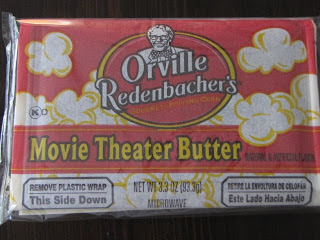
Since the 1970's, microwaves have become one of the most used appliances in American Kitchens. We have stopped "cooking" food and have become used to living off of artificially heated and reheated food. Side effects aside, microwaves promote the addition of processed and genetically modified foods such as; frozen snacks and meals, microwave popcorn and a host of other obnoxious things that we are feeding our families. The first step I took in living my life according to Ayurveda was to stop using the microwave. This article explains how microwaves function, the effects on human beings and tips on how to prepare food with out a microwave.
Microwaves, a form of electromagnetic energy, are used in many ways in our modern technological age. Microwaves are good for transmitting information from one place to another because microwave energy can penetrate haze, light rain and snow, clouds, and smoke. But the microwave is most familiar to us as an energy source for cooking food.
A microwave oven produces a spiked wavelength of energy with all of the power going into only one narrow frequency of the energy spectrum. Energy from the sun operates in a wide frequency spectrum.
Microwaves may also cause pathological changes in our bodies. Once the structure of a food is altered, it is unable to perform the desired function in our bodies. Clinical studies have shown that microwave heating of milk or cooking of vegetables is associated with a decline in hemoglobin levels. Will that kill you? Probably not. Is it good for you? I doubt it. These reductions may contribute to anemia, thyroid deficiency, and rheumatism. Sounds like a slow death to me.
A group of scientists at the Stanford University School of Medicine in California discovered that microwaving breast milk at high temperatures (72°C to 98°C) caused a marked decrease in activity of all the tested anti-infective factors. E. coli growth at >98°C was 18 times that of control human milk. Even at 20°C to 25°C, E. coli growth was 5 times that of control human milk. Because microwave radiation leads to a significant loss of the immunological properties of milk, the authors of the study concluded that microwaving is definitely "not a suitable heat treatment modality for breast milk".
Cooking methods and how they are applied in Ayurveda
The vibration of the heat affects the vibrational quality of the food; quick and light cooking creates more dynamic food whilst slow and low heat cooking creates a more mellow and grounded meal.
Generally speaking, more watery food is better for thin and dry vata types and less good for heavy set kapha types; oily food is better for vata and the less good for hot pitta types who are prone to having oily skin and kapha types who carry too much fat, and drier food is better for kapha less good for vata.
These are based on degrees of moistness, oilyness and dryness.
Steam - makes the meal soft and moist and enhances the flavours of the
vegetables. Benefits vata, pitta and kapha.
Water sauté - makes the meal more watery, softer. Benefits vata. Also fine for pitta and kapha.
Stir-fry - adds heat and vitality to a meal. Can aggravate pitta.
Oven cooking - more of a drying and heating effect on foods. Baking, rather than roasting is better for reducing kapha as this is a more drying. Roasting is a bit oily and can aggravate pitta and kapha.
Heat sources for cooking:
Fire - this method is not always practical these days, but when done properly a wood fire gives an excellent even heat for cooking.
Gas - has the great advantage of being able to be quickly turned up or down. It is a good quality of heat.
Electricity - a bit more of an aggressive form of heat, but extremely practical.
Aga/ Range - being slow and steady, this is best form of heat for consistent and even cooking.
Microwave - microwaves work differently to other forms of cooking. The microwaves create a change in polarity within the food molecules which generates a friction that warms the food up. This activity also changes the molecular structure of the food, often forcefully deforming them or tearing them apart. It is this friction and heat which can destroy the fragile structure of vitamins and enzymes in the food and creating unnatural by-products along the way.
Microwaves transform one type of amino acid, L-proline, into a form that can harm the nervous system and kidneys. Microwaves have been banned in Russia since 1976. There are numerous studies showing microwaves cause increased carcinogens in foods, increased free-radicals, low haemoglobin and white blood cell counts. Ayurveda does not recommend using microwaves due to the denaturing of the prana in the food.
Microwave Popcorn - No More
In the time it takes to microwave popcorn, I can pop my own corn on the stove. When the popcorn is "popped", I simply add the desired amount of butter to the pot, place the lid back and let sit for two additional minutes until the butter melts. Viola! movie Theater popcorn! Benefits; No chemicals, no stinky microwave.
Have you ever heated up bread in the microwave? Have you noticed that if you heat it too much that it turns into a rock. Hmmm, could be a change in the molecular structure. Solution; Toast the bread in a toaster or steam it over a pot of boiling water. This method works great for hotdog buns. I simply place a skimmer over the boiling water (can use the same water that the hot dogs are cooking in), the buns on top for two minutes and end up with hotdog stand style buns. My kids love them!
To conclude, the microwave in my kitchen has become a useless appliance. Once I think of a way to get rid of it that does not cause bad Karma, it will be gone! I am open to suggestions.

